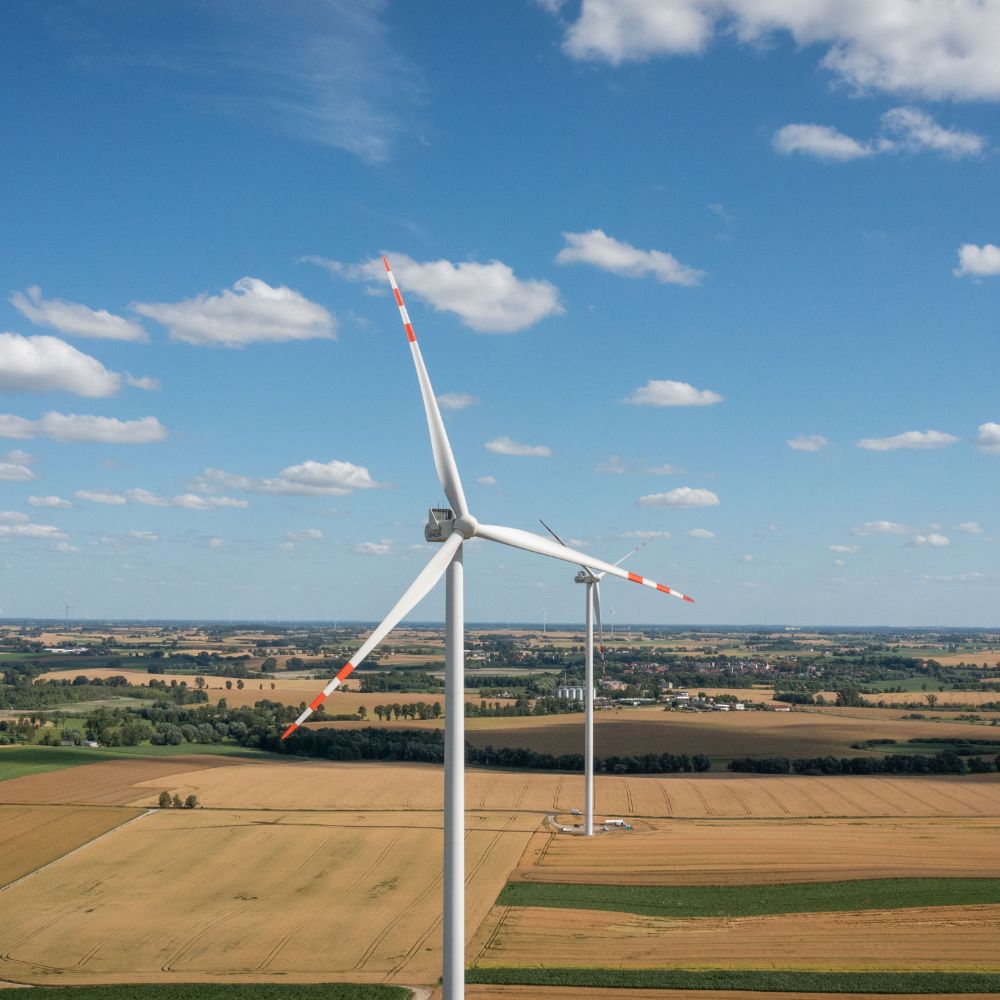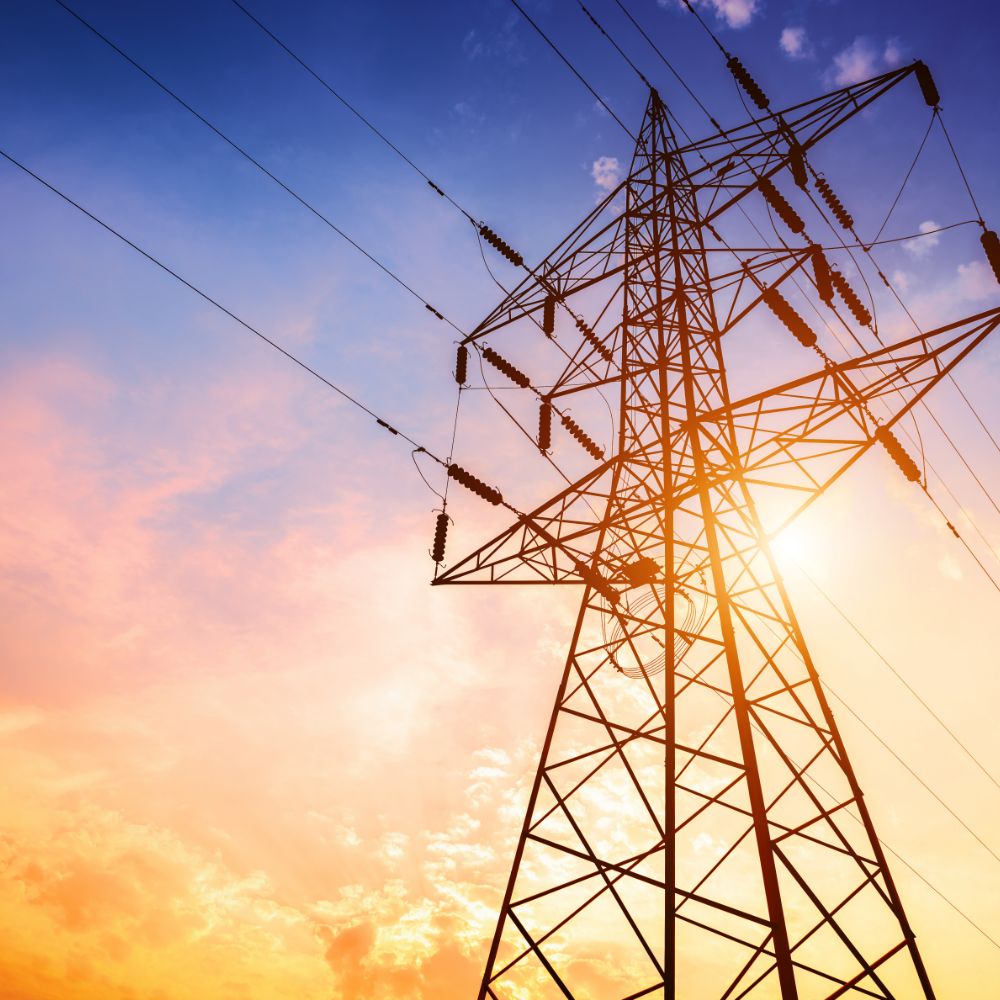
Sustainable finance
The balance that we follow in our activities also guides us in the financial sphere.
Our priority is to maintain a stable level of debt while implementing an ambitious transformation plan.
Assumptions for financing the investment program
- Implementation of investments together with partners
- Maximizing the utilisation of domestic and EU aid funds for the energy transition
- Using the potential of green debt financing
- Limited leverage increase while maintaining the rating
- Investments in the project finance formula

Financing model
PGE Group’s existing financing model takes into account the use of funds from its core activities, debt financing in the form of commercial bank credit facilities and bond programmes, credit facilities from Bank Gospodarstwa Krajowego (“BGK”), credit facilities from multilateral institutions such as the European Investment Bank (“EIB”) or the European Bank for Reconstruction and Development (“EBRD”) as well as in the form of preferential financing. In order to effectively manage liquidity, within the Group we have introduced a cash-pooling system, with participation of 29 Group companies.
External financing
An ambitious investment programme will require long-term planning and securing external financing.
As at December 31, 2022 the most important available external financing sources for PGE Group were as follows:
- Domestic bond programme of up to PLN 5.0 billion (not committed).
- Euro Medium Term Note (EMTN) bond programme of up to EUR 2.0 billion (not committed).
- 2 credit facilities from BGK as part of the „Inwestycje polskie” (“Polish investments”) programme, amounting to PLN 1.5 billion in total – amount withdrawn: PLN 1.0 billion.
- Syndicated loan – term facility of PLN 3.6 billion – amount withdrawn: PLN 1.5 billion.
- 3 credit facilities from the EIB with a total value of PLN 4.0 billion – PLN 3.5 billion will be used for projects related to distribution network modernisation and expansion, while PLN 0.5 billion for financing and re-financing of the construction of cogeneration units.
- Green facility loan of PLN 0.3 billion from EIB for financing of “green projects”.
- PLN 0.5 billion credit facility from the EBRD to support implementation of a long-term programme for distribution network development and modernisation – amount withdrawn: PLN 0.4 billion
- Multi-purpose financing line of PLN 2.0 billion from BGK intended for financing the interventional purchase of coal (contract terminated on March 9, 2023).
- Multi-purpose financing line of PLN 1.6 billion from BGK intended for financing the interventional purchase of coal.
- Multi-purpose financing line of PLN 2.0 billion from Powszechna Kasa Oszczędności Bank Polski S.A. (PKO BP) intended for financing the interventional purchase of coal.
- Multi-purpose financing line of PLN 0.5 billion (not more than equivalent of USD 0.1 billion) from Bank Polska Kasa Opieki S.A. (Pekao S.A.) intended for financing the interventional purchase of coal.
- Current-account overdraft facilities.
In addition, in 2023:
- On 3 February another loan agreement was signed with the EIB for PLN 1.4 billion.
- On 1 March, a PLN 1.6 billion multi-purpose line agreement was signed with BGK.
- On March 1, 2023 a PLN 2.3 billion syndicated working capital loan agreement was signed..
The funds will be used for current operations, including the implementation of investments in line with the PGE Group’s long-term strategy aimed at reducing greenhouse gas emissions and increasing electricity generation from renewable sources. The cost of financing will depend on the ESG rating assigned to PGE by a specialised agency.
The loan agreement has a special dimension for us because it directly links the cost of financing to the ESG rating of the PGE Group. PGE's focus on sustainable development realistically enables us to raise funds for investments more cheaply. This is the direction in which the PGE Group will follow, thereby reducing the costs of the energy transition in Poland
PGE Group’s financing policy features diverse maturities for specific financial instruments, which along with the diversification of financing sources, helps the Group to optimise its financing costs.
The Group aspires to implement a responsible financial policy, which entails maintaining its net debt to EBITDA ratios at a level that makes it possible to retain investment-grade ratings.
Effective use of available funding sources
The ongoing transformation of the Polish energy sector, including PGE, will be an extremely capital-intensive undertaking. The PGE Group’s capital expenditures by 2030 will reach even PLN 75 billion.
Therefore, skilful use of financing sources will be very important in this process – funds available for Poland from funds under the Cohesion Policy, the Recovery and Resilience Facility, the Just Transition Fund, React EU or the Modernization Fund may exceed EUR 45 billion, and the funds available directly from the European Commission (guarantees from Invest EU, Innovation Fund, Horizon Europe, CEF) is another EUR 120 billion.
In the case of the power sector, financing can be obtained in areas such as:
- Renewable energy sources
- District and individual heating
- Energy and heating infrastructure
- Energetic efficiency
- Employees training

The PGE Group intends to use the available sources of financing from the assistance funds available to Poland in the field of energy transformation. PGE’s ambition is that the share of obtained financing should cover at least 25%. the Group’s investment needs.
In addition, we will consider other external sources of financing that may support PGE’s transformation towards achieving climate neutrality in 2050 – such as „green” bonds or ESG financing.
Limiting exposure to market changes and a stable return on investments based on dedicated support mechanisms, as well as the use of off-balance sheet financing will have a positive impact on the company’s risk profile and will support building shareholder value.
Debt Structure
PGE Group finances its expenditures mainly with funds from on-going operations, i.e. revenue from sales, with a relatively stable structure.
We are currently implementing a capital-intensive investment programme, which also requires external financing. Our aim is to build and maintain a diverse debt structure allowing us to flexibly manage financing costs.
Our debt structure is presented below, by type of financing, maturity, currency and type of interest as well as changes in gross and net debt in successive periods.
PGE’s ratings
PGE S.A. holds ratings assigned by two rating agencies – Fitch Ratings and Moody’s.
| Description | Moody’s | Fitch Ratings |
|---|---|---|
| PGE’s long-term rating | Baa1 | BBB+ |
| Rating outlook | stable | stable |
| Rating date | September 2, 2009 | September 2, 2009 |
| Last rating confirmation date | January 13, 2023 | January 24, 2023 |
| Poland’s long-term rating | A2 | A- |
| Rating outlook | stable | stable |
At the beginning of 2023 rating agencies Moody’s and Fitch affirmed long-term rating of PGE S.A. at investment grade respectively at Baa1 and BBB+, both with stable outlook. Both agencies underline affirmation results from strong market position of PGE in the Polish electricity sector.
In its January 2023 announcement, Fitch indicates that the rating reflects the business profile of the PGE Group, which is the largest integrated Polish energy group and has a high share of revenues from regulated activities – electricity distribution and the Capacity Market.
The main constraints for the higher rating is the high share of electricity production from coal, resulting in high emissivity of generation assets and the Group’s exposure to high costs of CO2 emission allowances.
According to Fitch, the announced takeover of PKP Energetyka S.A. will support the business profile of the PGE group by increasing the share of regulated revenues.
Spin-off of coal assets to NABE would also support the company's credit profile, allowing the Company to focus its activities on distribution and RES, increasing the possibility of obtaining external financing.
Moody’s analysts confirmed the rating of PGE S.A. also in January 2023. According to the opinion issued by this agency, the confirmation of the assigned rating takes into account the leading position on the energy market in Poland, the strategy assuming concentration on the Renewables and Distribution segments after the separation of conventional coal assets and the low leverage ratios.
These factors are offset by uncertainty regarding the implementation of the government’s plan to take over PGE Group’s coal assets, challenges related to revenues resulting from regulations introducing maximum retail prices for electricity, the group’s high exposure to price volatility on fuel markets and large planned capital expenditures absorbing operating cash flow and carrying the risk of timely completion of the investment.
Moody’s also emphasizes the stable revenues from regulated activities (Distribution and District Heating segments), which are responsible for approx. 35% of EBITDA and low leverage ratios.
Already in 2023, both agencies in their comments positively assessed the progress in the process of spinning off PGE’s coal assets to the National Energy Security Agency.
Ratings assigned by both agencies confirm PGE’s long-term credibility on the capital and credit market.
PGE’s rating vs other Polish utilities (as at August 21, 2023)
| Company | Company Fitch rating and its outlook | Moody’s rating and its outlook | S&P rating |
|---|---|---|---|
| PGE | BBB+ stable | Baa1 stable | n/a |
| Orlen | BBB+ stable | A3 stable | n/a |
| Enea | BBB stable | n/a | n/a |
| Energa | BBB+ stable* | Baa2 positive | n/a |
| Tauron | BBB- stable | n/a | n/a |
| Polska | A- stable | A2 stable | A- stable |
Insurance policy
As a power consortium, we possess a series of high-value assets and our activities feature a very broad spectrum of operations.
As a company that is aware of the risk of accidents, natural disasters, as well as failures, destruction or theft, we try to address these risks. For this purpose, we established an insurance management procedure within the Group.
Its introduction served to create a coherent insurance management system in the Group, which takes place in a manner organised by the PGE’s Corporate Centre, i.e. PGE Polska Grupa Energetyczna S.A. Thanks to these activities, we possess a standardised, uniform rules, forms and procedures related to obtaining protection and settlement of damages, we also reinforced the PGE Group’s position in the insurance market.
The crucial insurance areas in the PGE Group include insurances of the most important assets in terms of risk related to natural disasters and failures as well as the resulting loss of revenue.
Furthermore, we insure the Group’s civil liability on the executed activity and possessed property.
From 2016, PGE is part of the PZUW Mutual Insurance Company (TUW PZUW). TUW is an alternative to classic insurance companies that act as joint-stock companies and their purpose is to achieve profit.
TUWs are associations of persons or entities that have the same objective and interest, identifying not through capital relations (like a joint-stock company), but through affiliation and common purpose – instead of profit, the main objective of a TUW is to satisfy the needs of its members in terms of insurance coverage.
By joining the TUW PZUW as a member, we guaranteed an alternative method of transferring risk based on the reciprocity rule as part of our own PGE CG Reciprocity Association (hereinafter referred to as the Association) and the ability to build lasting relations with the insurance and reinsurance markets. This form of risk transfer is based on a cost transparency, which allows for optimising the insurance programme, costs of a possible insurance and reinsurance brokerage, and in consequence – the premiums paid. The system of premium settlement as part of the Association allows for achieving returns or lowering the premium at a low ratio of damages.
Any surcharges are only projected in the case of the Association’s negative result and can amount to max. 50% of the assigned premium. The Association does not take part in covering the TUW PZUW losses or in covering the losses of other functioning associations.
According to Article 103 of the Act of September 11, 2015 on insurance and reinsurance activity, the regulations on public procurements do not apply to insurance agreements concluded with a mutual insurance company by entities constituting members of the given company, which mainly allows to negotiate the price and makes the agreement conclusion process much more flexible and shorter.
It is however necessary to note that the membership in the TUW PZUW does not mean that we do not use other insurance methods – depending on the needs and estimated costs, we co-operate in a broad scope with insurance and reinsurance companies and use the services of insurance and reinsurance brokers.
